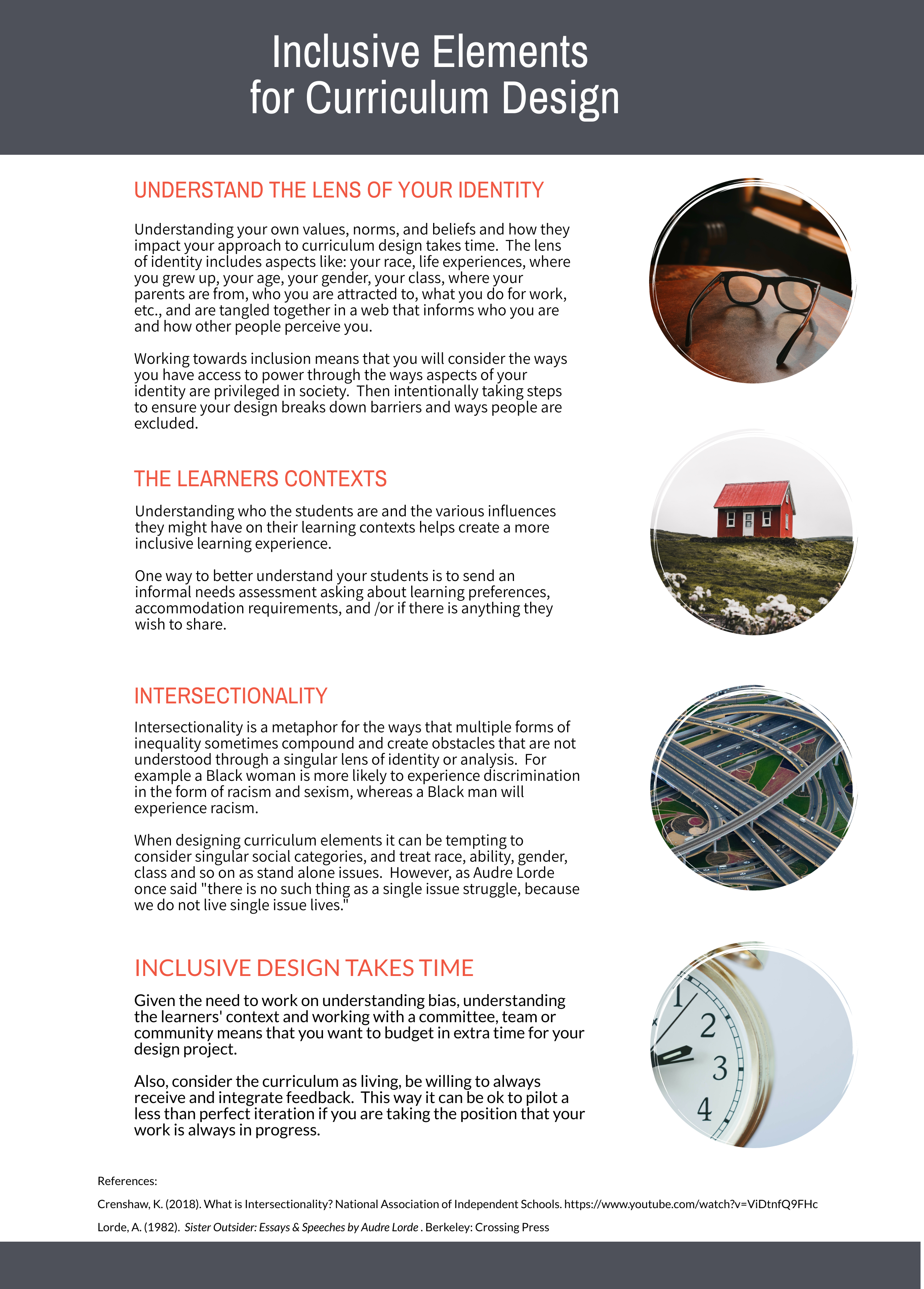Inclusive Design Considerations
WIL program design should reflect an awareness that each participant is unique in their social, cultural, and political histories. In order to feel included or welcome, participants need to feel they belong to their WIL communities in ways that are inclusive of the diverse experiences and perspectives they bring.
Elements of Inclusion
Recall the Explore Your Lenses module and consider the kinds of lenses you personally bring to program design. When creating any program design it is helpful to work with others from diverse communities to identify elements that create barriers or potential bias. Once you consider the ways that your identity (class, gender, race, sexuality, language fluency, etc.) influences the way you are designing programs, you may find that it will take a bit longer to ensure you are offering something inclusive.
 |
For more on this please read this short blog post: Opening up inclusion: Anti-oppression and inclusive design. |
Browse through the presentation below to understand/ review the principles of inclusive design to help guide the re-visioning or re-design of an inclusive WIL program. Please note that the work of becoming inclusive is ongoing and evolving.
ELEMENTS OF INCLUSIVE DESIGN IN WIL PROGRAMS transcript.docx

Inclusive Elements for Curriculum Design transcript.docx
|
|
See the ACE-WIL Provincial Projects: |
Reflective Prompts
|
Please engage with the following reflection questions and think about your WIL program with an equity lens. Who defines professionalism? Who is left out of that definition? What does this mean in the WIL student journey? What policies, language, and practices are at play in WIL students' applications to your program? How might that be a barrier to students who experience marginalization? What kinds of supports are in place regarding accommodation? Who liaises with employers and community partners to ensure that students are in workplaces that value diversity? |